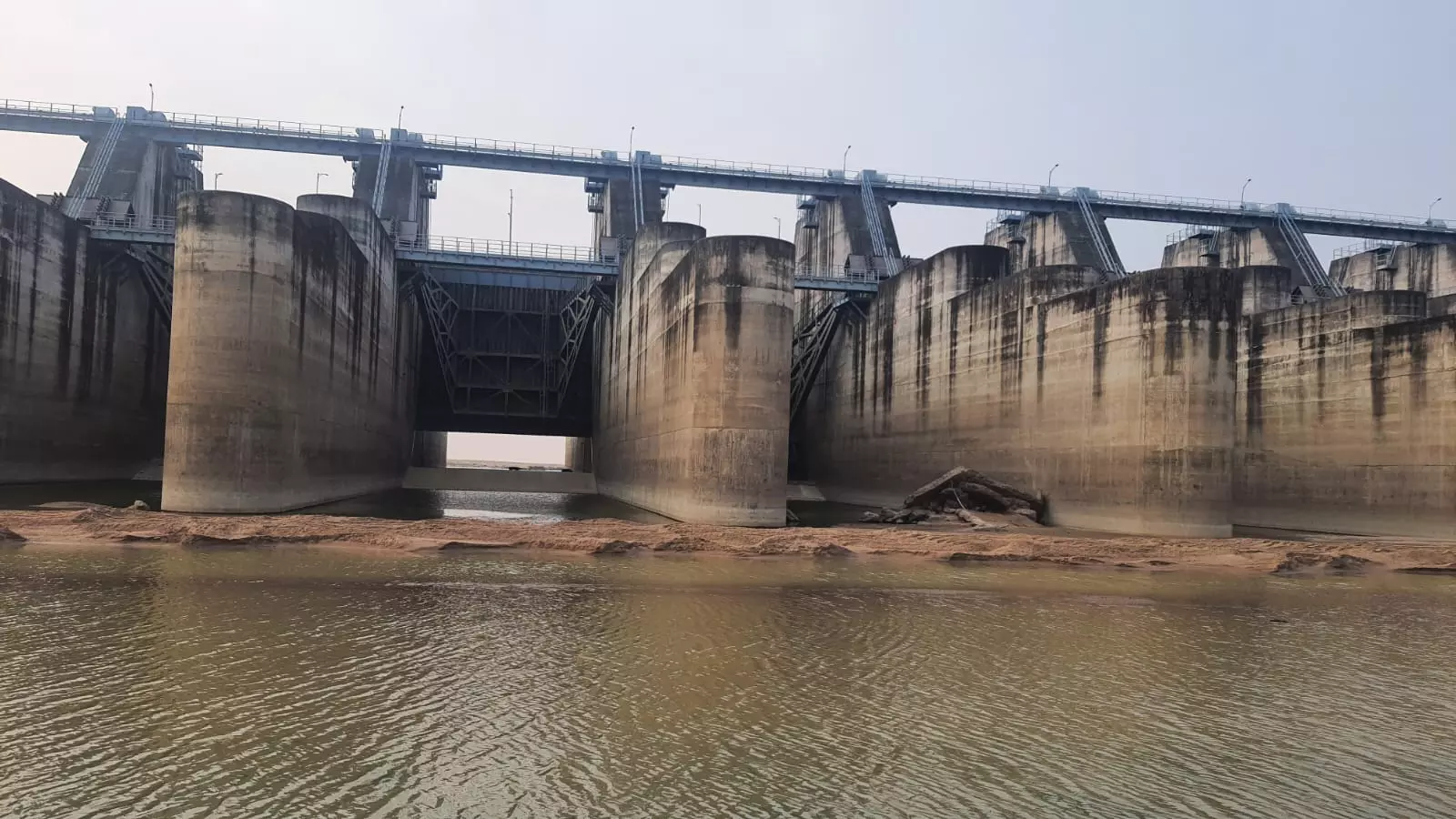Officials Ignored 2019 Medigadda Repair Recommendations

Hyderabad: The irrigation department officials, for reasons best known to them, or possibly to the then BRS led government in 2020, ignored implementing safety measures at Medigadda barrage of the Kaleshwaram project.
Had those measures, including strengthening the apron on the downstream side– portions of which were washed away after the floods in Godavari in 2019, the year of its inauguration by the then chief minister K. Chandrashekar Rao, the situation could not have come to the state it is in today, according to well-placed sources.
The issue of the recommendations not being implemented is learnt to have come to light, embarrassingly so for the irrigation department, during the field visit to the barrage on May 27 by top department officials. The officials were accompanied by members of a team of technical experts among whom was a professor from IIT Hyderabad, who was sought out after the 2019 flood damage to recommend ways to arrest further damage and increase protection at the barrage.
Sources said that Prof. T. Shashidhar, a civil engineering expert from IIT-H, during Monday’s inspection, told the officials that the damage visible to the downstream apron was of recent origin, after the 2022 floods. To this, the sources said, irrigation officials explained to him that the damage was the one that occurred post the 2019 floods. To this, Prof. Shashidhar is learnt to have questioned why recommendations in a report submitted by IIT-H in 2020 were not implemented.
One of the specific recommendations was constructing a new apron and stilling basin to reduce the shooting velocity of the water passing through the open gates. The sources said irrigation officials had no ready explanation.
Sources said the original design of the apron was to accommodate shooting velocity of 6 metres per second, while the actual velocity touched 22 metres per second. Coupled with the absence of a downstream tail pool to reduce the velocity, portions of the apron, as well as huge cement concrete blocks placed after the apron, were washed away in 2019.
The high shooting velocity, according to sources, was also due to the irrigation department officials in-charge of the barrage and the Kaleshwaram project at that time instructing that gates be opened only for 10 centimetres against the minimum required 2 metres as per the barrage design parameters.
With no repairs called for by the irrigation department even after the IIT-H report, and the continued use of the barrage in the subsequent years and the heavy floods again in 2022, led to further erosion and damage, which contributed to sand from under the foundation getting washed away which resulted in the sinking of Block 7 of the barrage, sources said.

